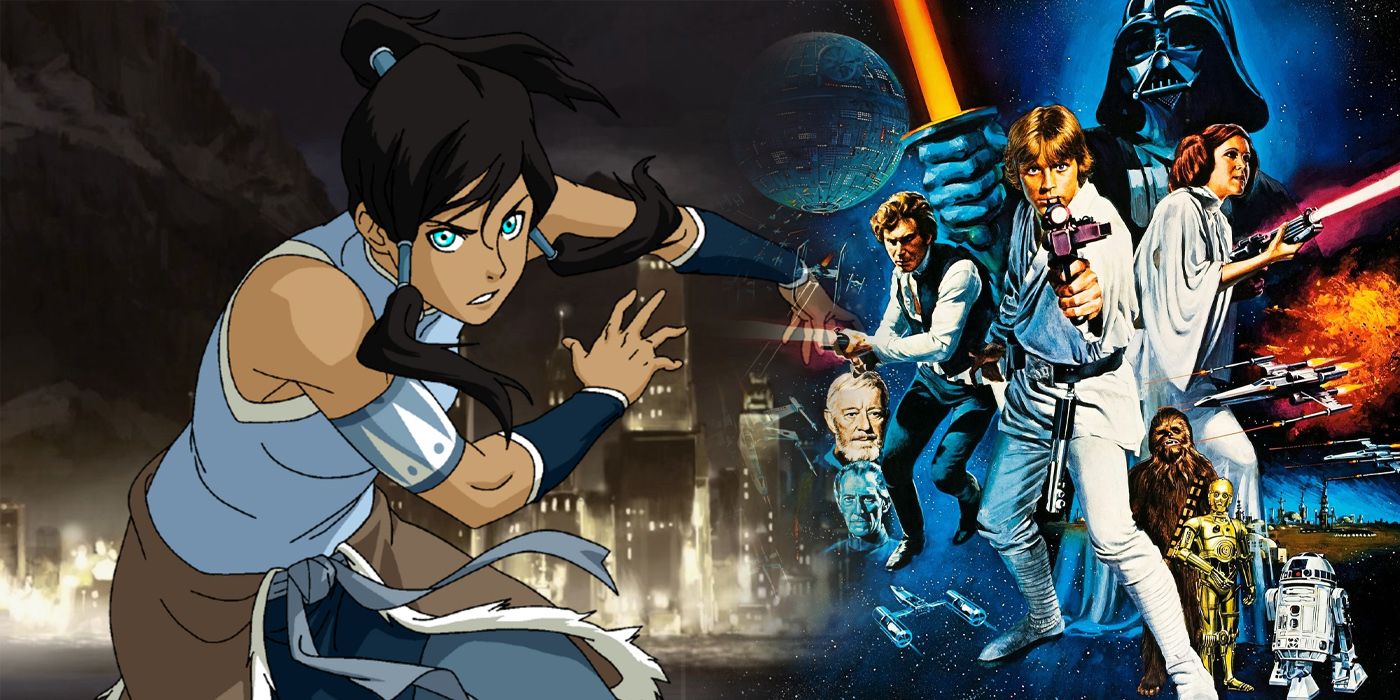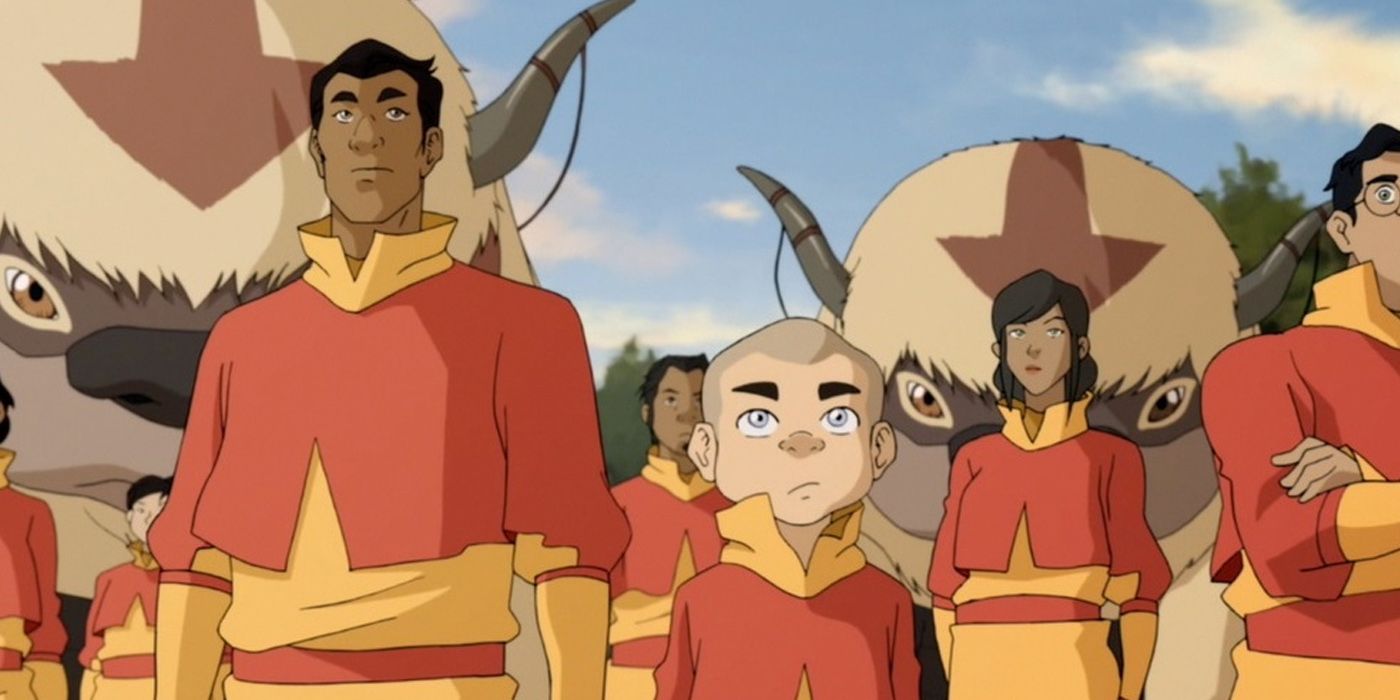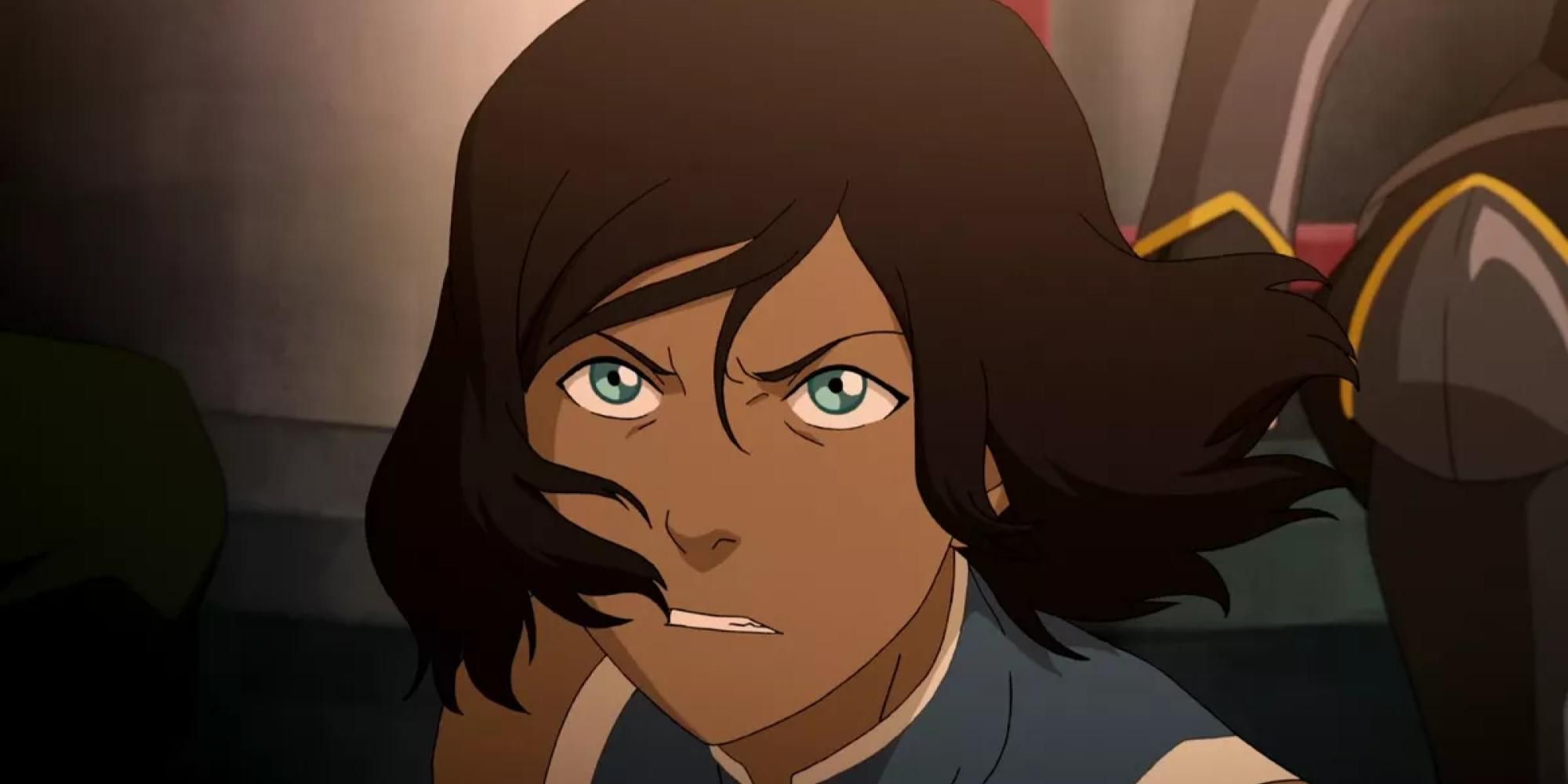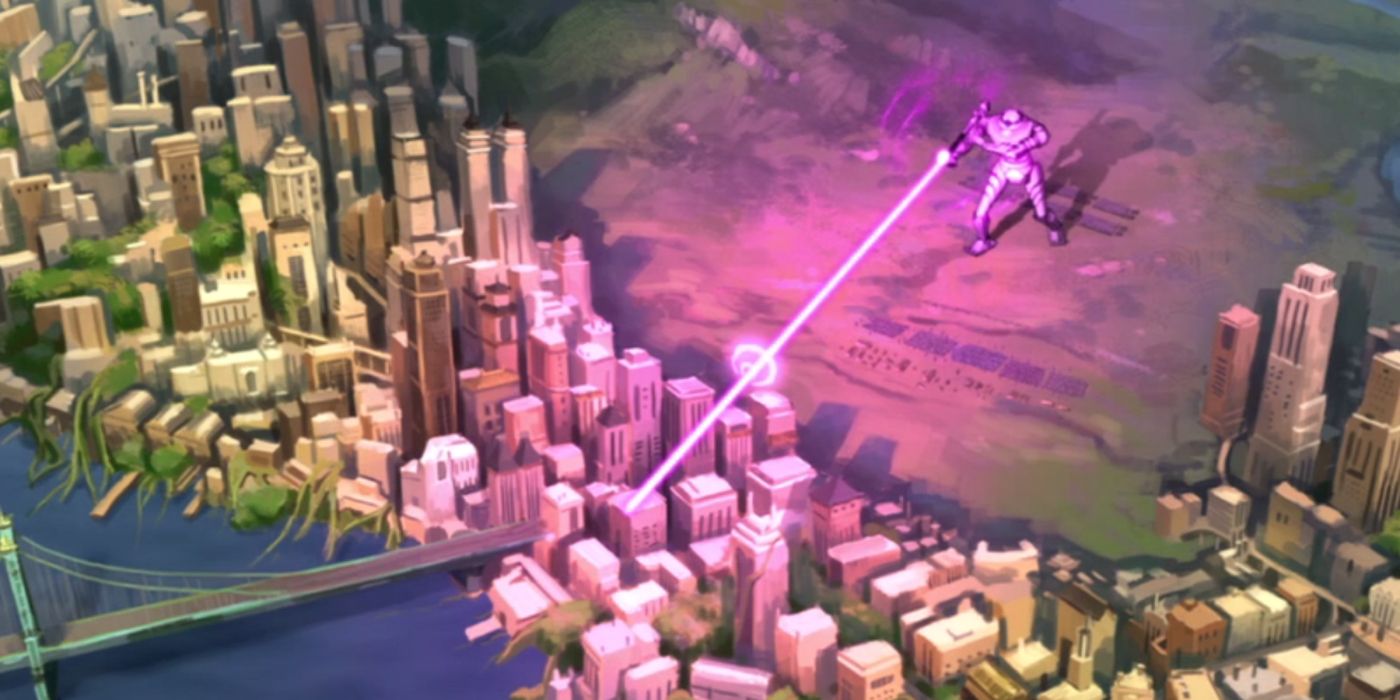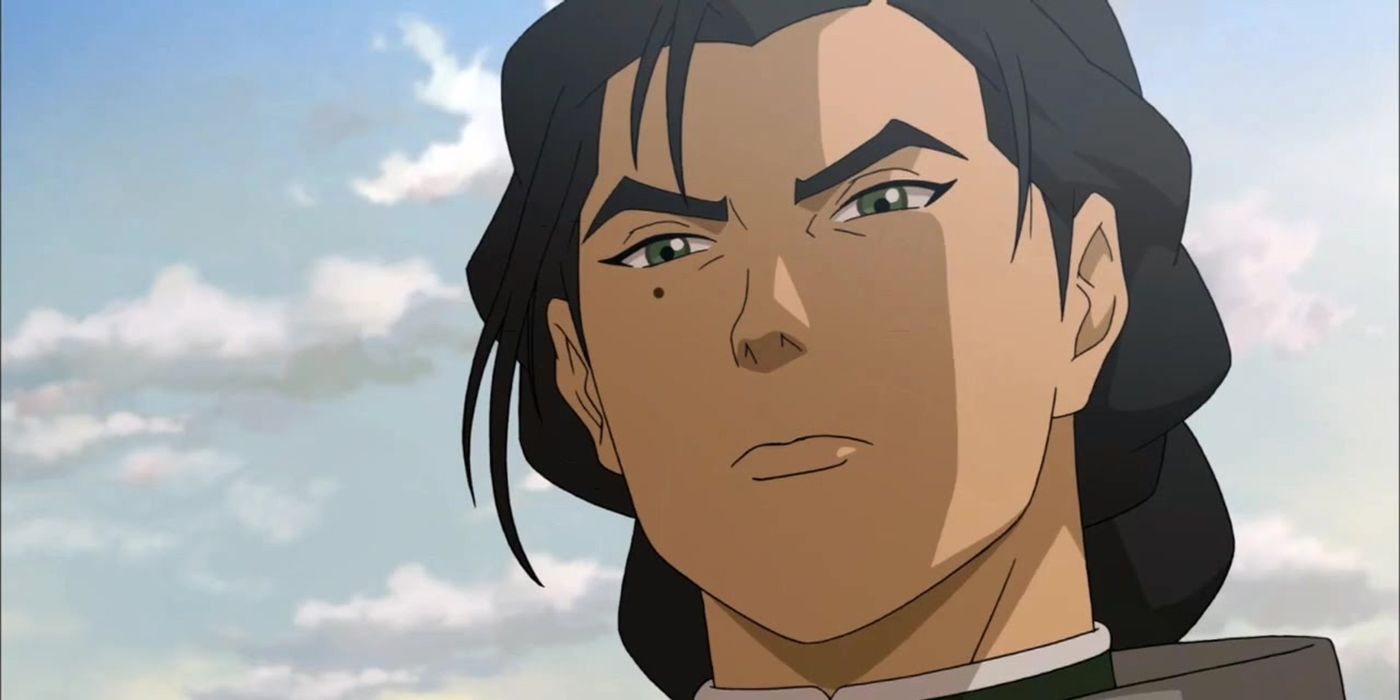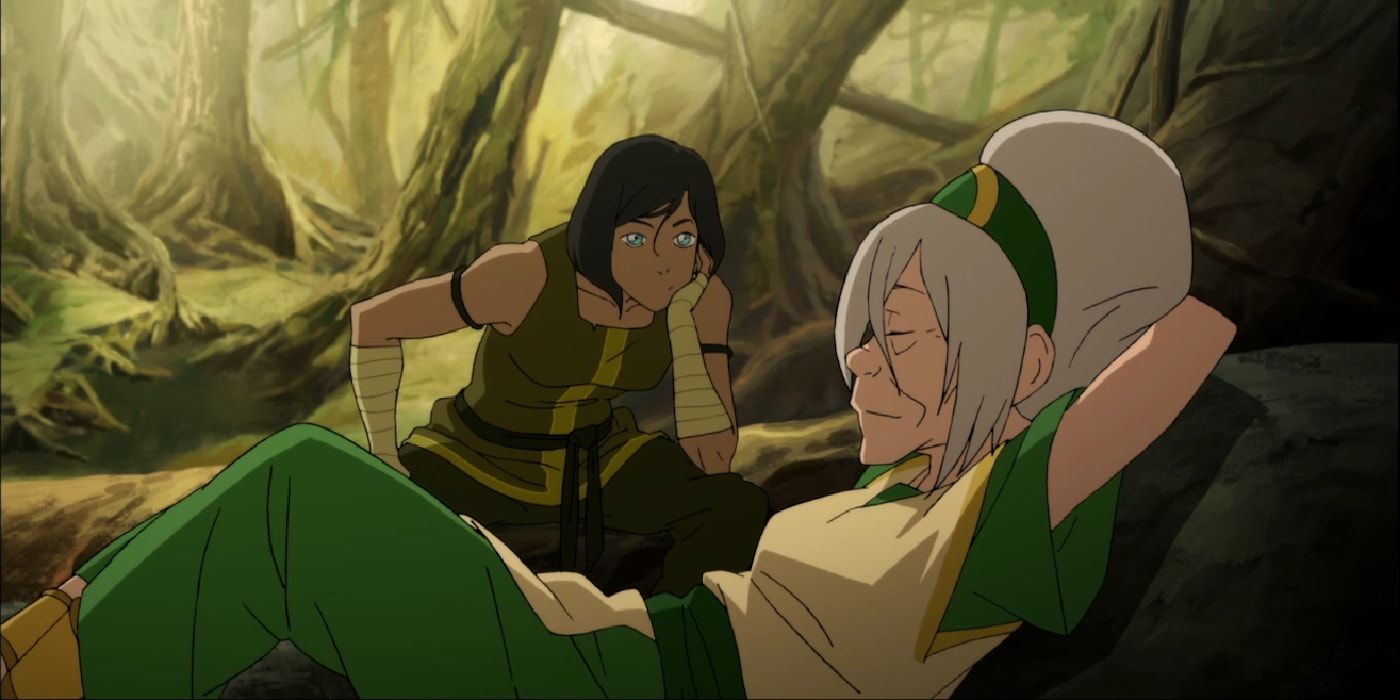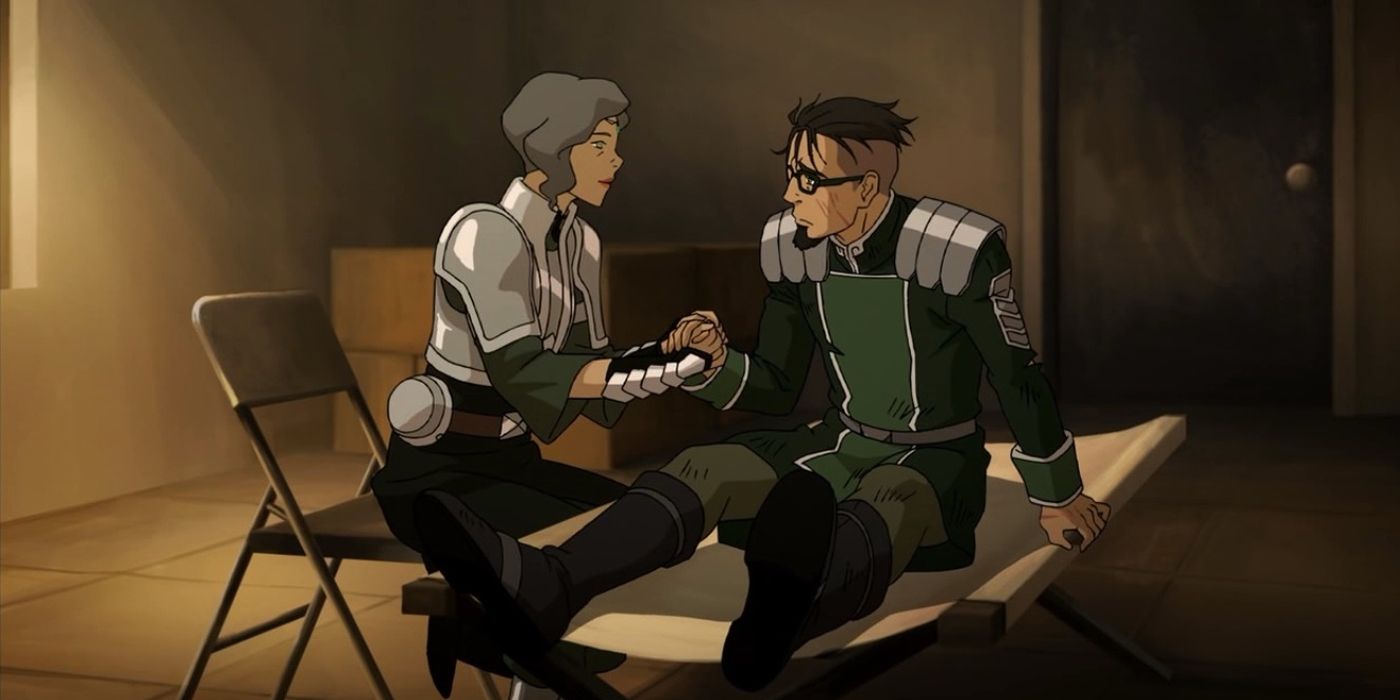While they may be galaxies apart in terms of tone and narrative, the fourth and final season of Avatar: The Legend of Korra and the general Star Wars franchise share some similar story beats. Intentionally or not, the creators of Korra reinterpreted these familiar tropes effectively, taking the best that George Lucas' incredibly influential Star Wars property has to offer and incorporating it into the series' heart-pumping final act.
Indeed, the Star Wars and Avatar universes share significantly overlapping DNA. Both properties are essentially Chosen One stories with detailed mythologies, as well as their own form of magic — the Force and elemental bending, respectively. Additionally, both series are set against the backdrop of rather extensive political dramas as the heroes are forced to combat gigantic and imposing regimes. In fact, the various tribes and diverse cultures within the world of Avatar, each of which is represented by a different bending style, serves as a microcosm of the larger, but equally expansive Star Wars galaxy.
However, it is season 4 of Legend of Korra where the parallels are most fully on display. Here are a series of similarities between that final season and the Star Wars franchise.
Air Nomads are Jedi Knights of the Avatar Universe
Meditative, principled, and skilled, both the newly reformed Air Nomads and the Jedi function as peacekeeping squads in their respective universes. Thought to be the stuff of legend when Jedi and airbenders more-or-less died out and disappeared for a span of some years, both groups experience a resurgence throughout their perspective series. A vast majority of Jedi were killed via Order 66 but, years later, in The Last Jedi, hints are dropped that the Force has begun to manifest itself once again in seemingly ordinary people (i.e. "Broom Boy"). Likewise, the airbending population was rendered nearly extinct prior to the events of Avatar: The Last Airbender, but Korra's opening of the spirit portal led to the creation of new airbenders and the resulting reformation of the Air Nomads for the first time in nearly two centuries.
The inhabitants of the Jedi and Air temples are also, ostensibly, students and both are indoctrinated from an early age whenever possible. Linked by practices involving mediation, self-reflection, and intense connection with otherworldly powers (the Force and the Spirit World), the Jedi Knights and Air Nomads emerge as perhaps the most potent sources of light and life in their perspective universes and often find themselves on the frontline of the battle against evil. Unsurprisingly, the Air Nomads, regardless of age and ability, fearlessly took on Kuvira and her forces in the same way the Jedi have during their own centuries-long struggle against the Sith.
Hero Was In a Dark Place When We Last Saw Them
Leading up to the final acts of the original Star Wars trilogy and Korra, the main protagonist is left dealing with some serious trauma. At the end of Empire Strikes Back, Luke Skywalker finds himself at an all-time low, having lost a duel (and his hand, in the process) with Darth Vader — who infamously announces himself to be Luke's father. The darkness of Luke's story is easily mirrored with Korra's mental state at the start of her series' final season. Left broken by her experience with Zaheer in the previous arc, a still-poisoned Korra must confront and reckon with her past if she has any hope of saving the future and taking full ownership of her Avatar identity.
Of course, creating additional obstacles for characters — psychological or otherwise — that lead into a story's conclusion is hardly a new trope. However, both the original Star Wars trilogy and The Legend of Korra utilize the story convention effectively for their Chosen One hero, particularly since their past failures help raise the stakes for what is certain to be an exciting narrative climax. By forcing characters to come back from great personal loss, the potential for showing heroism, strength, and unbreakable will grows exponentially.
Unstoppable Weaponry
"Fire when ready!" Star Wars fans are unlikely to have missed this Star Wars: A New Hope homage the moment it left Kuvira's lips. The line, which she speaks before firing her all-powerful spirit vine canon, is identical to Tarkin's before using his own devastating weapon, the Death Star. Using unstoppable weapons of mass destruction, the villains of Star Wars and The Legend Korra's final season have no shortage of power when amassing power.
But the homage doesn't stop there. The scene in which Kuvira's giant mecha suit is felled by a series of wires is incredibly reminiscent of the Stormtrooper's All Terrain Armored Transports (or "AT-ATs") being tripped by the Ewoks in Return of the Jedi. However, in Korra, the familiar trick doesn't stop the destruction for long — her enormous weapon easily recovers from the fall.
Fascist Antagonist
All of The Legend of Korra's primary villains are notable in that they are representative of various political philosophies; philosophies which, when embraced too fully, can lead to violent outcomes. Amon, who led the revolutionary Equalist party back in season 1, is representative of Communism. Perverting spirituality and, in so doing, amassing power at the expense of a thriving civilization, Unalaq represents theocracy in season 2, and anarchy is clearly embodied by Zaheer, who attempts to overtake the world's governments in season 3 with a mighty squad of advanced benders. However, for season 4's primary antagonist, Kuvira, The Legend of Korra writers and creators chose to explore a political philosophy that's ever-present within the Star Wars' Galaxy Far, Far Away: fascism.
Both Kurvia's Earth Empire and the Palpatine's Galactic Empire are marked by their intense nationalism, militarization, and unscrupulous propaganda. Take, for instance, Kuvira's speech where she declares her intent to replace the Earth Kingdom with a vastly different form of government: "I have created a new Earth Empire and I will continue to lead it into the future myself, bringing a new era of prosperity for my people. And let me assure my fellow leaders of one thing: Anyone who crosses our borders or stands in our way will be crushed." Now compare her speech with Palpatine's very similar Declaration of a New Order: "We will defend our ideals by force of arms. We will give no ground to our enemies and will stand together against attacks from within or without. Let the enemies of the Empire take heed: those who challenge Imperial resolve will be crushed." Like all fascists regimes, both utilize a highly militarized base and capitalize upon their leaders' charisma and popularity, all the while threatening all who resist with brutal retaliation and violence.
Swamp Training with a Powerful Warrior of the Past
Korra and Luke each find themselves in desperate need of training and both turn to a swamp-dwelling legendary master for answers. Interestingly, both Toph, first introduced in Avatar: The Last Airbender and Yoda have been apart from much of the recent action, despite their prominent roles in the building of new worlds now being forcibly overtaken. Hidden away and immersing themselves in nature and meditation, these two mentors are also linked by their tough teaching styles — both speaking in riddles and inflicting rather relentless methods upon their students.
Using figures like Toph and Yoda, both of whom have been built up as influential figures in the story, helps to build upon familiar themes of generational growth and absorbing the knowledge from those who came before, while excising the parts which were missteps and helped lead to the current turmoil. While it may have been nice to know that the younger actions of these legendary figures resulted in a truly peaceful and utopia-like world, the reality is often considerably more complicated. By incorporating these once-formidable (and, in Toph's case, one might argue still-formidable) heroes this way, there is greater emphasis on the never-ending quest for peace and the truth that every generation will need a new group of warriors to fight for it. By giving the new generation both the room to fail and the wisdom to succeed, Toph and Yoda pass the torch to the new protector of their universe, effectively bridging the past with the present in what has always been a cyclical struggle.
Reunited Families Making Amends
Although both season 4 of Korra and the Star Wars franchise are stories which are heavily built upon themes of chosen family, they are also connected by ideas surrounding familial forgiveness. Like many real-life ideologies, the policies and influence of subversive leaders like Kuvira and Palpatine led to the breaking up of many families, as embodied by Su's son Baatar Jr. joining the militant group, even at the expense of his own family's future and safety — a situation mirroring Darth Vader's turn from his own children in order to continue his activity with the Empire. Yet, the conclusion of both Vader and Baatar's character arcs involve the reaffirmation of the familial bond. After his safety is jeopardized by the cruel Palpatine, Vader saves ultimately saves Luke and meaningfully connects with his son in the final moments of his life. Likewise, once his fiancée Kuvira is seemingly willing to sacrifice him for her larger cause, Baatar is quick to align himself with his family, giving away valuable information that will surely mean his death if he were ever implicated. Thankfully, both heel-turning characters are ultimately forgiven.
Another echo of the Luke-Vader parent-child relationships is seen through Asami (Korra's friend and eventual romantic interest) and her father Hiroshi. Previously estranged due to Hiroshi's past crimes perpetrated all the way back in season 1, Asami is seen to have forgiven her father once they reconnect and collaborate during before the final showdown with Kuvira. Clearly repentant of his actions, Hiroshi selflessly joins his daughter as they attempt to create an opening in Kuvira's nearly unstoppable mecha suit, Hiroshi sacrifices his life for the cause — but not before he saves Asami by ejecting her from their aircraft, which is crushed moments later. Both Asami and Luke are seemingly moved by their fathers' actions and, it is implied, will learn from their mistakes as they rebuild the world anew.
Thanks to shared character archetypes, similarly detailed mythologies, and commitment to investigating faulty and dangerous political structures, the final season of Avatar: The Legend of Korra has more in common with the world of Star Wars than one might initially imagine. The reimagining of these tropes and shared story beats helped to create a final season that managed to be simultaneously familiar, fun, and fresh, wrapping up Korra's story with a bang worthy of any intergalactic epic.

